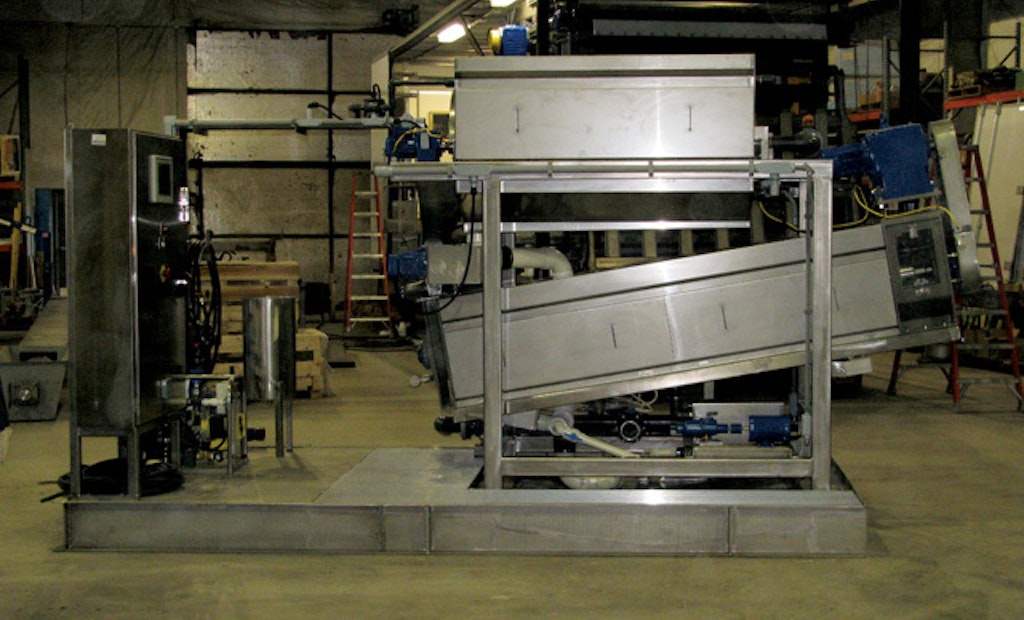The 3012 DSP screw press from BDP Industries, designed for smaller size wastewater treatment facilities processing 1 mgd or less, handles up to 75 gpm of septage (400 pounds of dry solids per hour) and produces a cake of 25 percent solids. The unit measures 8 feet by 16 feet, weighs 4,000 pounds and can be operated unattended. Made of stainless steel for corrosion resistance, it is fully self-contained, eliminating odors and the chance of spills.
“It’s so simple. There are only three moving parts – the screw auger, drive assembly and pre-thickening drum. That’s it. There aren’t near the number of bearings and moving parts of other dewatering options,” says Kelly Brown, director of marketing and sales for BDP.
Maintenance primarily consists of replacing the brush assemblies on the tips of the flights inside the screw auger typically every 3-5 years.
“A key feature of BDP’s design is the pre-thickening rotary concentrator. A screw press is very good at pressure dewatering, but it’s not very good for thickening,” Brown says. “You need low porosity and lots of filter area to capture particles and handle the high hydraulic loadings in the typically dilute feed associated with septage and municipal applications. A screw press does not have low porosity or high filter area. The rotary concentrator provides low porosity and a lot of filtration area.”
The independently controlled rotary drum thickener provides the pre-thickening filtration area with the ability to select the filter media to provide the required porosity to meet the application. The slot screen design used in the screw press prevents plugging and maximizes capacity. The design recycles the filtrate from the screw press through the Rotary Concentrator, preventing solids loss.
Replaceable flights/brushes, bolted to the base assembly rather than welded to the shaft, enable the flights/brushes to be replaced and adjusted for proper clearance between the flight tip and the slotted screen, ensuring optimum performance on the internal screen for maximum filtrate drainage.
The tapered auger shaft creates a reduction in path length for the liquid to be expressed from the cake, causing a pressure force at a right-angle to the auger shaft and against the perforated drum, reducing the tendency for plugging.
“If you think how a screw auger works, the auger pushes the liquid along the screw toward the discharge, but the material inside can’t start turning with the screw,” Brown says. “If it starts turning with the screw, it’s not going to be conveyed. The screw is plugged and the only way you can unplug a screw is to dismantle it.”
By using a tapered design, cake is pushed against the drum at greater pressure for drier cake but without plugging. 518/695-6851; www.bdpindustries.com.






